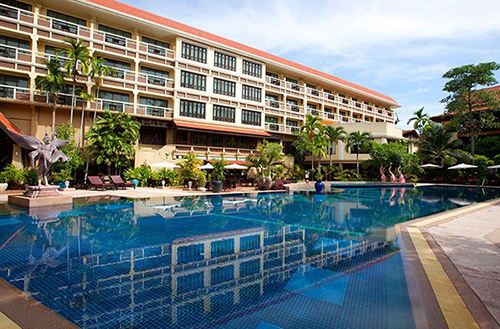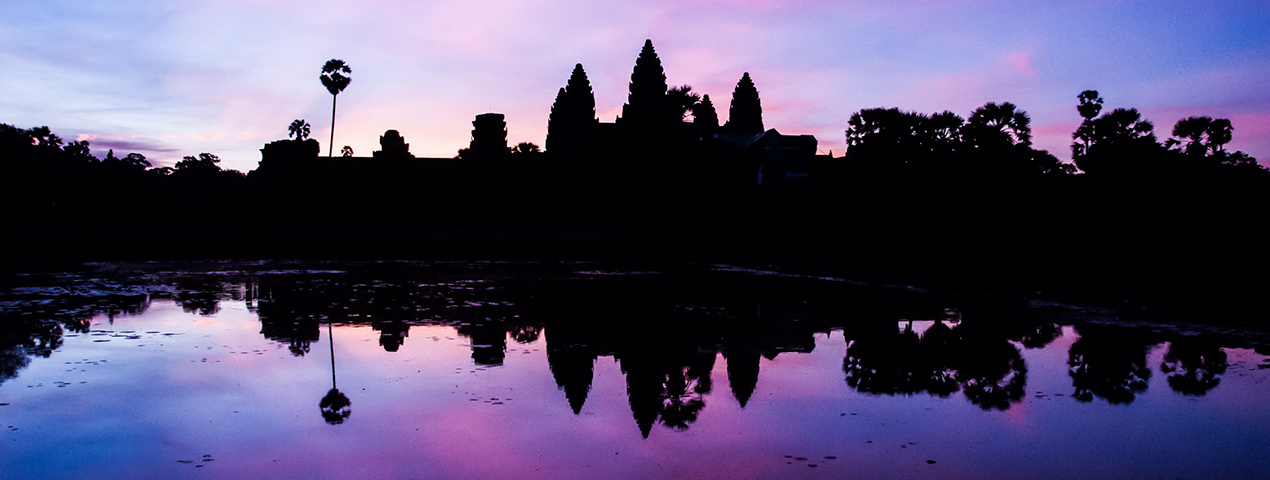Siem Reap is situated in the northern part of Cambdoa, that is high potential for tourism due to numbers of temples in the region. More than 2 million tourists travel to Siem Reap every year to enjoy the most lively town, learn about the culture and history of the Khmer ancient temple, especially, Angkor Wat. Furthermore, many other attractions are existed for international tourists to see such as national park, wildlife, flooded forest and floating villages.
important Attractions:
|
|
| Popular Tours of Angkor, Siem Reap |
|
 |
| A GLANCE OF ANGKOR
A quick adventure through multiple magistic runins of the ancient Khmer civilization.
Destination: Siem Reap, 2 Days
Read More > |
|
 |
| ANGKOR HIGHLIGHT
A perfect vacation of Angkor to explore the ancient Khmer temples, and enjoy the lively colonial town.
Siem Reap - 3 Days
Read More > |
|
 |
| LEISURE OF ANGKOR
The sequence of history and a relaxing holiday in Angkor without any frustration of being hurried.
Destination: Siem Reap, 4 Days
Read More > |
|
 |
| SIEM REAP ADVENTURE
A journey that includes the most impressive old capital of the Khmer Empire Phnom Kulen and less-visited ruin Beng Mealea.
Destination: Siem Reap, 5 Days
Read More > |
|
 |
| NORTHERN CAMBODIA REMOTE RUINS
An adventure to a remote ancient city of Koh Ker in the north of Angkor which is less seen by most.
Destination: Siem Reap, 6 Days
Read More > |
|
 |
| Preah Vihear EXTENSION
An excursion to a newly world heritage inscribed mountain-top temple on the Thai border.
Destination: Siem Reap, 6 Days
Read More > |
|
 |
| BATTAMBANG EXTENSION
A fantastic trip along Sangke River to learn about the daily life of the people in the flooded forest and the discovery of colonial town.
Siem Reap, & Battambang - 7 Days
Read More > |
|
 |
| CLASSIC CAMBODIA
A combination of the two most visited destinations of Cambodia, Siem Reap Angkor and the modern developed capital Phnom Penh.
Siem Reap & Phnom Penh - 7 Days
Read More > |
|
 |
| AROUND TONLE SAP LAKE
An unforgetable and exclusive experience with a journey to discover the regions where most people have not known about them.
Siem Reap, Battambang & Phnom Penh - 10 Days
Read More > |
|
 |
| ANGKOR ON TWO WHEELS
An exclusive visit for bike lovers to several Khmer ruins from one to another, includes a venture into the wilderness of the thick peaceful jungle.
Siem Reap, 3 Days
Read More > |
|
 |
| CAMBODIA CLASSIC BICYCLE ADVENTURE
A cycling adventure to remote regions to learn and discover the local lives from Siem Reap to Phnom Penh passing through Battambang.
Siem Reap, Battambang & Phnom Penh, 9 Days
Read More > |
|
 |
| CAMBODIA BICYCLE CHALLENGE
A long ride challenge between Laotian to Vietnamese border with a tour to multiple attractions on the way.
Stung Treng, Preah Vihear, Siem Reap, Battambang, Phnom Penh & Kampot - Kep, 19 Days
Read More > |
|
 |
| ANGKOR JUNGLE HIKING
An exclusive visit to temples of Angkor with the access through the jungle and hidden entances.
Siem Reap, 5 Days
Read More > |
|
 |
| KULEN WATERFALL JOURNEY
An adventure trekking to see the ancient Angkor ruins, and protected national park Kulen where is the beautiful waterfall located.
Siem Reap, 5 Days
Read More > |
|
 |
| ANGKOR PHOTOGRAPHY
Making a more exclusive and memorable holiday in Angkor by capturing loads of amazing pictures.
Siem Reap, 5 Days
Read More > |
|
 |
| CAMBODIA PHOTO COLLECTIONS
Journey around the great lake Tonle Sap to hunt thousands of exotic photographs.
Phnom Penh, Siem Reap, Battambang & Phnom Penh, 10 Days
Read More > |
|
|
| |
| |
| Our Favourite Accommodation |
 |
| Raffles Grand d'Angkor Hotel |
|
|
| An oasis of tranquillity and a place of great inspiration, the Raffles Grand Hotel d'Angkor is a haven for the well-travelled. A stone's throw from the temple ruins of Angkor and the bustling resort town of Siem Reap, the hotel's luxuriant accommodations, services and facilities offer a unique blend of old-world charm and modern necessities. |
|
|
 |
|
|
| A spacious and elegant hotel, Royal Crown Hotel is conveniently situated just across the Siem Reap river from the bustling French quarter and the Old Market. The building has retained the true colonial French characteristics.
The luxury accommodation are all tastefully furnished, spacious, decorated in soft, subtle colours and impeccable clean. The Royal Crown Hotel to make your visit to our country a unique and enjoyable experience.
|
|
|
 |
|
|
A sanctuary for tourists and corporate guests alike who expect the excellent hospitality and friendly service. So whether you are here for business or pleasure, the Prince D' Angkor Hotel & Spa offers a luxurious haven, elegantly furnished to provide you with a comfortable stay, all the facilities and traditional Cambodian hospitality you would expect.
Experience ultimate luxury and bask in the splendor of elegance at the Prince D' Angkor Hotel & Spa, the perfect base from which to explore the legendary Angkor temples and undiscovered treasures of Cambodia. |
|
|
 |
| The Fin Inn - Private Boutique Villa |
|
|
| A private pool boutique home and is a best choice for your holiday accommodation in Siem Reap. It is built in a unique style of Cambodian architectural concept to combine both local and western tastes. It provides an oasis comfort and relaxing atmospher to bring you along with the ultimate happy experiences. It locates in the middle of a local community where you can see endless smiles and friendliness. |
|
|
|
| |
|
| Registration/Patent Number: 5000159321/E116-2200002104 |
Copyright © 2001 - 2025, The Fin Travel & Tours |
|
|


